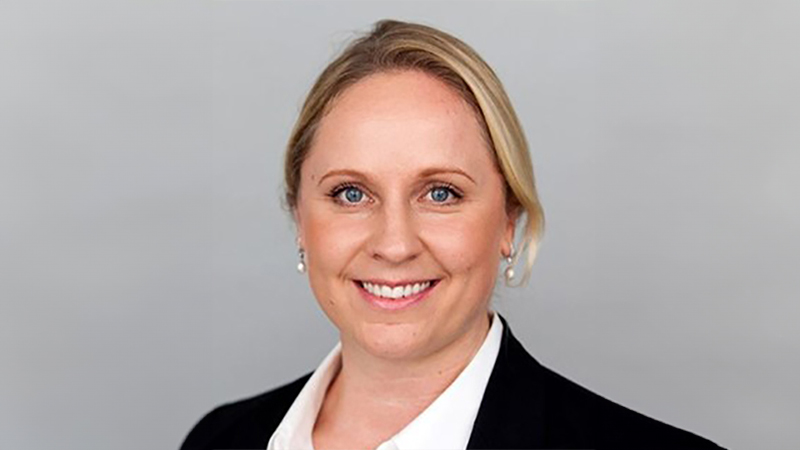As fund managers adapt to macroeconomic conditions they have likely not experienced before in their careers, Newton Investment Management’s Bhavin Shah (pictured) takes one piece of advice with him: “Be aware of how much you do not know and always question the information around you. Embracing different perspectives is key.”
He says that the onset of higher interest rates, inflation, and geopolitical risk makes it a particularly interesting time to be a multi-asset investor.
“We are in a very different cost environment compared with the last decade and there are a lot of investment professionals that have never seen an inflationary period and significant interest rate rises,” he says.
Shah has 20 years’ experience in managing multi-asset portfolios and joined Newton from SG Hambros in 2011.
While his first role with portfolio management responsibilities came in 2007, fund management was not part of his original plan.
“I am a scientist by background, having studied mathematics and theoretical physics at university. I have always loved learning and understanding how the world operates both at a macro and micro level. After leaving university, I wanted a job in which I could quench my thirst for knowledge.”
Taking up his first role in fund management just before the global financial crisis (GFC), Shah said the experience helped shape his investment philosophy.
“That was a baptism of fire,” he says. “However, it helped me form a key part of my investing philosophy which is based around the importance of protecting capital, both in real and absolute terms.”
“Investing is inherently probabilistic and being able to put the odds on your side is key. To do that you have to continually question your assumptions. I am keen to explore new ideas and try to surround myself with people who have different perspectives, some of whom may disagree with me.”
See also: Were markets too complacent about a soft landing scenario?
Climate transition
Shah co-manages a variety of Newton’s multi-asset strategies, including parent company BNY Mellon’s FutureLegacy portfolios which were launched last year.
“We are in a very different cost environment compared with the last decade and there are a lot of investment professionals who have never seen an inflationary period and significant interest rate rises,” he says.
Shah says the last decade, which had ultra-low interest rates, is likely to be the “anomaly” in history.
“As a result, there has been a large misallocation of capital that will have to be unwound.”
In terms of long-term trends, Shah is focusing on opportunities arising from the energy transition. He says a “huge spend must happen” to help the world meet its climate objective and limit global warming.
“Over the last few years there has been a huge focus on the ‘E’ of ESG, but it is important to think about economic and social policies and how they marry together. How we navigate that by investing behind government and social politics will be crucial.
“Elsewhere, ageing populations will require more efficient use of healthcare such as the integration of artificial intelligence in diagnostics and diagnosis. We have been through a period of loose monetary policy that has created fragility in the system and a big divergence between asset prices and the real economy.”
“I think we will start to see a shift in balance towards labour and the real world which could mean more volatile asset prices. But in the long run, I think this should lead to a better allocation of capital and more stable economy.”
He adds the world has become more aware of the stresses society has placed on the Earth’s natural resources.
“To meet governments’ ambitious net zero targets and decarbonisation goals, we need to see a fivefold increase in investments. Approximately 25% of global carbon emissions come from the heating and cooling of buildings, so companies that can help improve the efficiencies of these systems are going to see increased demand.
“About 35-40% of a building’s electricity cost and carbon footprint comes from its heating, ventilation and cooling system and therefore the payback period for installing more efficient systems is compelling for building owners.
“Elsewhere, we are living in a more digitalised and connected world, which alongside themes like greening technology and electrification, will lead to an increased demand for semiconductors. This makes this sector particularly interesting.”
See also: Square Mile: Bond funds feature heavily in July ratings update
Fixed income
While the Bank of England and European Central Bank have initiated interest rate cuts over the last few months, Shah says higher bond yields has made fixed income an interesting asset class once more and provides diversification for multi asset portfolios.
“With the change in regime due to the rise in inflation, the challenges are much more balanced. There is still a huge amount of debt in the system, there are still the demographic challenges that are happening.
“But alongside that, you’ve seen geopolitical risk rise. Covid has shown the fragility of supply chains. You’re seeing more reshoring and protectionism coming through, especially in key components around critical infrastructure. There are shifts in monetary policy and fiscal policy, as infrastructure spend increases to meet the worlds decarbonisation targets.
“That makes the bond world much more interesting,” he adds, “because there is likely to be more interest rate volatility as the market wrestles with near term softening in the US labour market, while balancing longer term fiscal deficit concerns. The market currently is focusing on short term interest rate challenges, but core inflation remains sticky and fiscal deficits remain high”.
“You’re now getting a real yield on fixed income, which makes equity valuations a little bit more vulnerable at a headline level. You have to focus on the fundamentals, and try to understand where structural growth opportunities are, where there are risks within that, and that valuations really matter. Fixed income now offers us diversification. This is why being a multi-asset investor at this point in the cycle is really, really interesting.”










